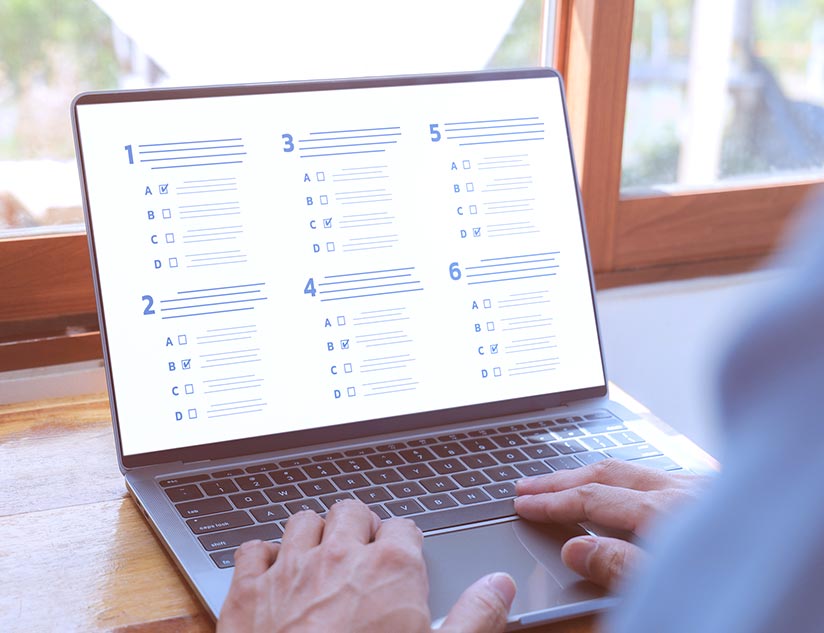Maximizing Learning Outcomes: A Guide to Effective Digital Assessments
November 10th, 2023
The digital learning ecosystem is evolving at warp speed. Amid global labor shortages and the loss of learning years, driven by the pandemic, there is a greater emphasis on skill-building and providing equitable opportunities to all learners. Digital assessments, too, must transform the environment to address the changing education requirements. Consequently, the adoption of online learning assessment tools that ease the conducting of surveys, exams, and learning outcome evaluations has snowballed.
Digital assessment platforms offer multiple benefits, such as:
- Enhancing the accessibility and flexibility of evaluations by providing anytime, anywhere assessment options
- Automating grading, instant feedback, adaptive evaluation, and comparative judgment to improve assessment efficacy
- Enabling teachers and decision-makers to harness the power of data to measure learning impact and gain actionable insights to improve education delivery
Types of Digital Assessments
Based on the goal and timing, assessments can be of various types:
Formative assessments are conducted at short intervals throughout the learning process. They ensure that students’ learning is progressing as expected, in sync with the course. Formative assessments highlight learning gaps and assess the proficiency achieved during the learning process.
Summative assessments are conducted at the end of the course or learning year. These are formal and highly evaluative. They reveal the extent to which the learner’s skill or knowledge has grown. Summative assessments are used to set and assess the achievement of learning benchmarks.
Diagnostic assessments are conducted at the start of a course or learning period. They assess the learner’s current level of knowledge. The results help set expectations and goals while guiding teachers on reinforcements that might be needed through the teaching process.
Adaptive assessments are customized to individual learning needs based on their previous performance and learning goals. This type of assessment is key to adequately responding to individual learning needs, discovered through data analytics, to ensure progress.
Features of Effective Digital Assessment Platforms and Tools
Look for the following characteristics in an online learning platform for comprehensive and well-rounded assessments:
Variety of Question Types
An online assessment platform must allow teachers to use diverse question formats in various languages. These may include quizzes, matching the following, fill-in-the-blanks, MCQs, short and long descriptive questions, audio/video responses, drag-and-drop, and gamified question sets. These tools should also be equipped to assess language skills, such as listening, writing, speaking, and reading.
Real-Time Feedback
A critical ability of AI-powered online learning assessment tools is providing instant feedback. These tools evaluate responses and grade evaluations to provide immediate feedback, along with suggestions for improvement regarding learning resources to bridge learning gaps.
Data Analytics and Reporting
The K-12 testing and assessment market is forecast to grow at a CAGR of 10.21% between 2022 and 2027, driven by this key feature. Lesson creators, curriculum experts, and educators must evaluate the efficacy of learning at the class, school, district, and state levels. Assessment tools must facilitate such evaluation to facilitate improvements in learning content, pedagogy, and curriculum design to meet learning requirements at par with global and national standards. Additionally, they assess the consistency and quality of marking assessments to reduce personal bias in evaluations.
Accessibility Features
Accessibility of assessments in both offline and online modes is essential to ensure equity in education. Simple augmentations like audio-enablement for the visually impaired and speech responses for motor impairments translate to better learning opportunities. They also help reduce bias and level the learning field.
How to Create Effective Digital Assessments?
To improve the quality of assessments:
- Align assessments with learning objectives.
- Use a variety of question formats to meet all-round evaluation requirements.
- Provide clear instructions and expectations to align learners with the assessment requirements.
- Pilot test assessments before using them on students.
Tips on Using Digital Assessments Effectively
Here are a few guidelines to optimally leverage digital assessment tools for teachers:
- Communicate the purpose of assessments to students.
- Give students time to practice using the assessment platform.
- Provide timely and personalized feedback utilizing automated grading.
- Use assessment data for informed and differentiated instruction.
Completing the Learning Process with Effective Assessments
In the rapidly evolving learning landscape, ensuring that assessments develop at pace is critical to the overall success of education at all levels. Online learning assessment tools with intuitive navigation and user-friendly interface design, multiple question formats, anytime-anywhere access, color-coded real-time question management, and powerful analytics can transform assessments.
The all-new Assessment Player by MagicBox™ is designed to meet the diverse assessment needs of K-12, higher education, and corporate training. It can be seamlessly integrated into any online learning platform via APIs. It offers adaptive and real-time feedback to improve learning efficacy. The tool also facilitates assessing learning achievement and education efficacy at individual and group levels. While credibility remains a significant concern among K-12 and higher education levels, this compliant and multi-platform-enabled assessment player is designed with the regulatory landscape in mind. Talk to the experts at MagicBox™ to modernize assessments and transform education.













